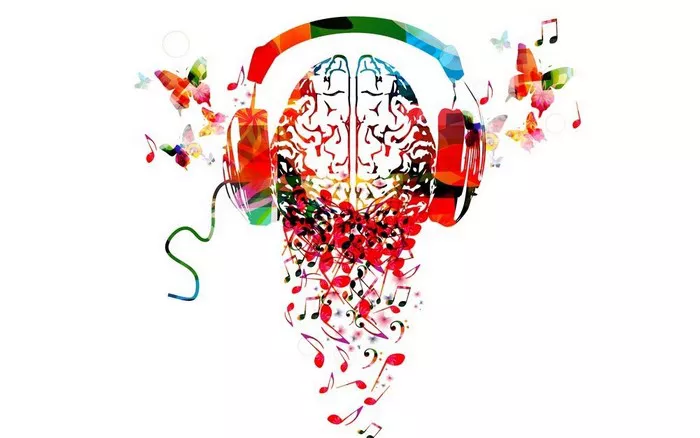Music has been an integral part of human culture for millennia, captivating audiences and influencing emotions across diverse genres. Beyond its aesthetic appeal, music has also been subject to scientific inquiry, particularly regarding its effects on the brain. Research into the neurological impact of different music genres has unveiled intriguing insights into how various styles stimulate brain activity, influence mood, and even affect cognitive functions. This article delves into the fascinating intersection of music and neuroscience, examining how different genres elicit distinct neural responses and exploring the potential implications for mental health, cognition, and well-being.
The Power of Music
Music holds a unique place in human experience, transcending linguistic and cultural boundaries to evoke profound emotional responses. Whether it’s the soothing melodies of classical compositions or the pulsating rhythms of electronic dance music, each genre has its own distinctive characteristics that resonate with listeners on a visceral level. Beyond mere entertainment, however, emerging research suggests that music has the power to modulate neural activity, influencing everything from mood regulation to cognitive performance.
The Neurological Underpinnings of Music Perception
To understand how different music genres affect the brain, it’s essential to first examine the neurological mechanisms involved in music perception. When we listen to music, our brains undergo a complex interplay of sensory processing, emotion regulation, and reward circuitry activation. Functional neuroimaging studies, including functional magnetic resonance imaging (fMRI) and electroencephalography (EEG), have provided valuable insights into the neural correlates of musical processing.
Classical Music: A Symphony for the Brain
Classical music, with its intricate compositions and emotive melodies, has long been celebrated for its ability to evoke profound emotional responses. From the transcendent symphonies of Mozart to the contemplative sonatas of Beethoven, classical compositions engage multiple regions of the brain, eliciting a rich tapestry of neural activity. Research suggests that listening to classical music can enhance cognitive functions such as attention, memory, and spatial reasoning, making it a popular choice for studying or relaxation.
Rock and Roll: The Beat of Rebellion
With its energetic rhythms and rebellious spirit, rock and roll has captivated audiences worldwide since its emergence in the mid-20th century. Characterized by electric guitars, driving percussion, and impassioned vocals, rock music elicits a potent emotional response, activating brain regions associated with reward processing and arousal. Studies have shown that listening to rock music can induce feelings of empowerment and self-expression, making it a popular choice for workouts or social gatherings.
Jazz: Improvisation and Creativity
Jazz music, with its improvisational ethos and complex harmonic structures, offers a unique window into the creative process. Rooted in African American musical traditions, jazz encompasses a diverse range of styles, from smooth ballads to frenetic bebop improvisations. Neuroscientific research has revealed that listening to jazz can stimulate brain regions associated with creativity and emotional expression, fostering a sense of improvisational freedom and spontaneity.
Pop Music: The Soundtrack of Modernity
Pop music, with its catchy hooks and infectious melodies, dominates the airwaves of mainstream culture. From chart-topping hits to viral sensations, pop music exerts a powerful influence on our collective consciousness, shaping trends in fashion, language, and social behavior. Studies have shown that listening to pop music can activate brain regions involved in social cognition and emotional empathy, fostering a sense of connection and belonging among listeners.
Electronic Dance Music: Rhythms of the Future
Electronic dance music (EDM), with its pulsating beats and futuristic soundscapes, has emerged as a dominant force in contemporary music culture. Characterized by synthesizers, drum machines, and computer-generated effects, EDM offers a sensory-rich experience that transcends traditional notions of musicality. Neuroscientific research suggests that listening to EDM can induce altered states of consciousness, modulating brain activity in ways that promote relaxation, euphoria, and transcendence.
Conclusion
The neurological impact of different music genres offers a compelling glimpse into the intricate interplay between sound and the human brain. From the classical symphonies of centuries past to the pulsating rhythms of modern electronic dance music, each genre elicits a distinct neural response, influencing mood, cognition, and behavior in unique ways. By unraveling the mysteries of music’s neurological effects, researchers hope to unlock new avenues for therapeutic interventions, cognitive enhancement, and creative expression. As we continue to explore the fascinating intersection of music and neuroscience, one thing remains clear: the power of music to captivate, inspire, and transform the human mind knows no bounds.
With a deep understanding of the neurological underpinnings of music perception, we can appreciate the profound impact that different genres have on our brains and behavior. As research in this field continues to advance, we may uncover new insights into how music can be harnessed as a therapeutic tool for mental health disorders, cognitive enhancement, and emotional well-being. Whether it’s the soothing melodies of classical compositions or the energetic rhythms of electronic dance music, the universal language of music has the power to unite, heal, and uplift us all.
























